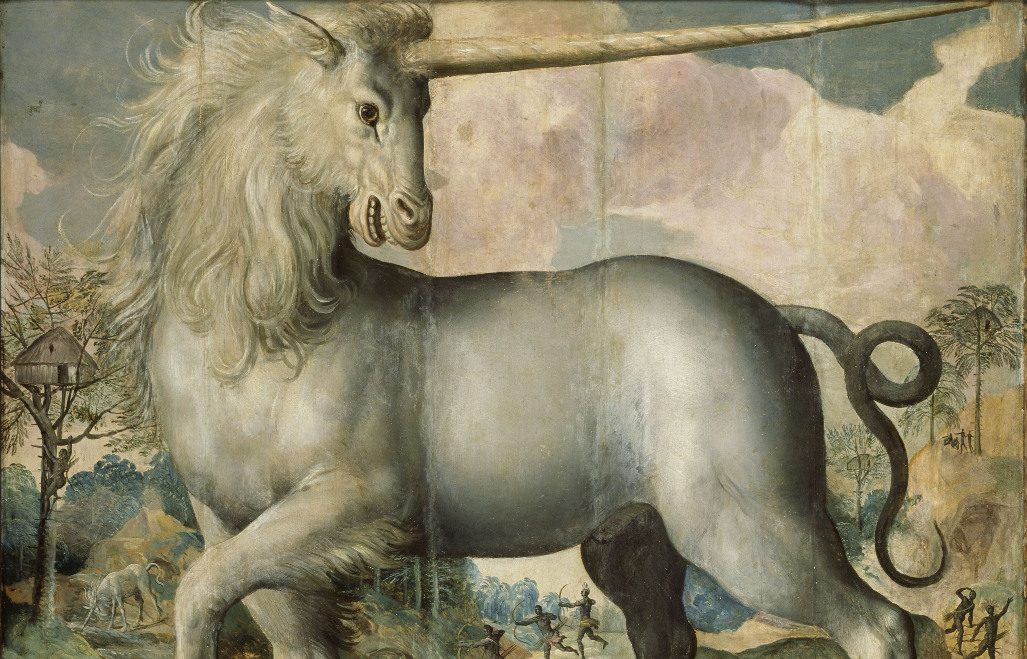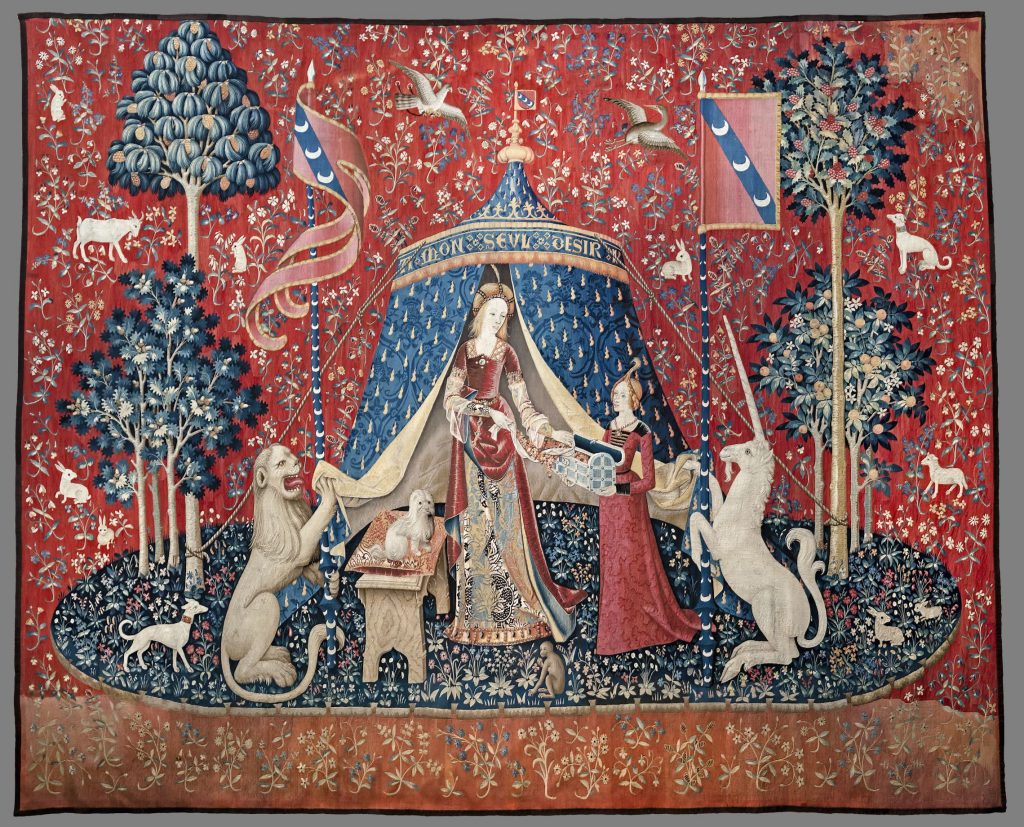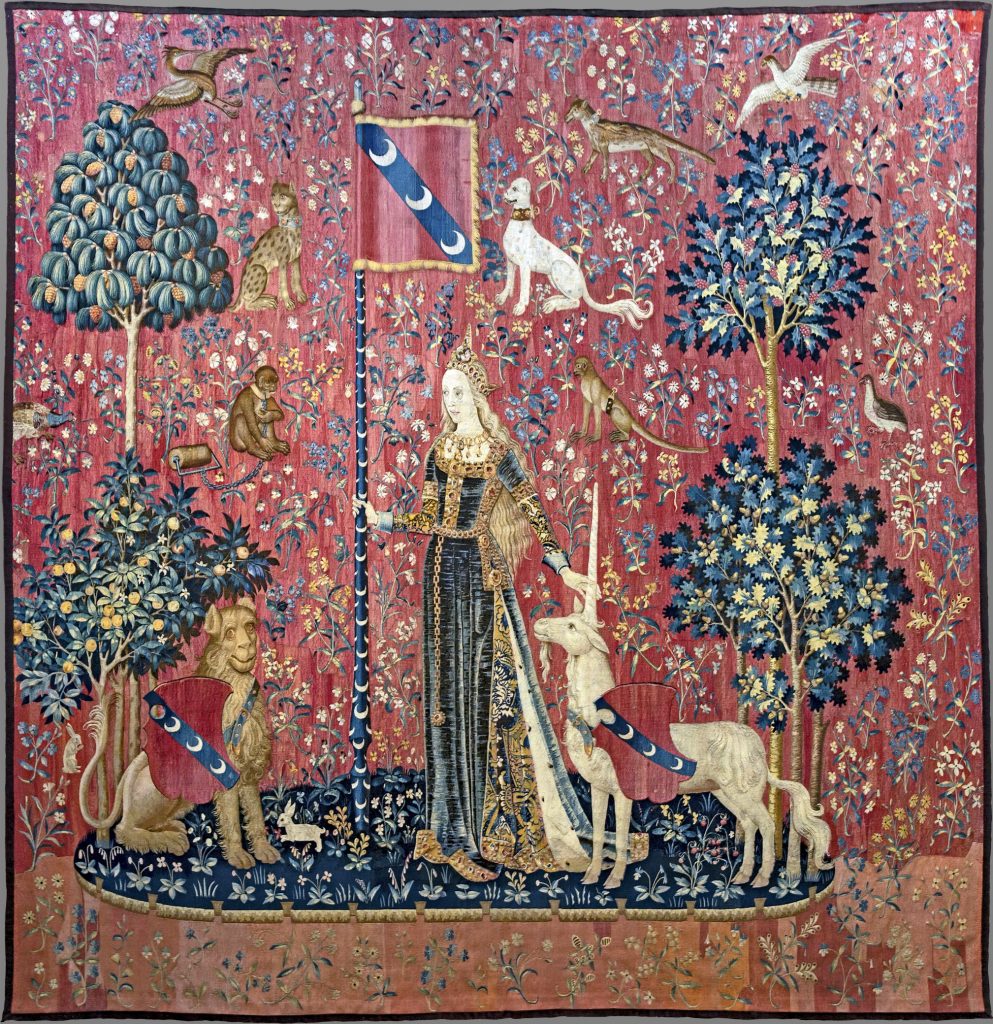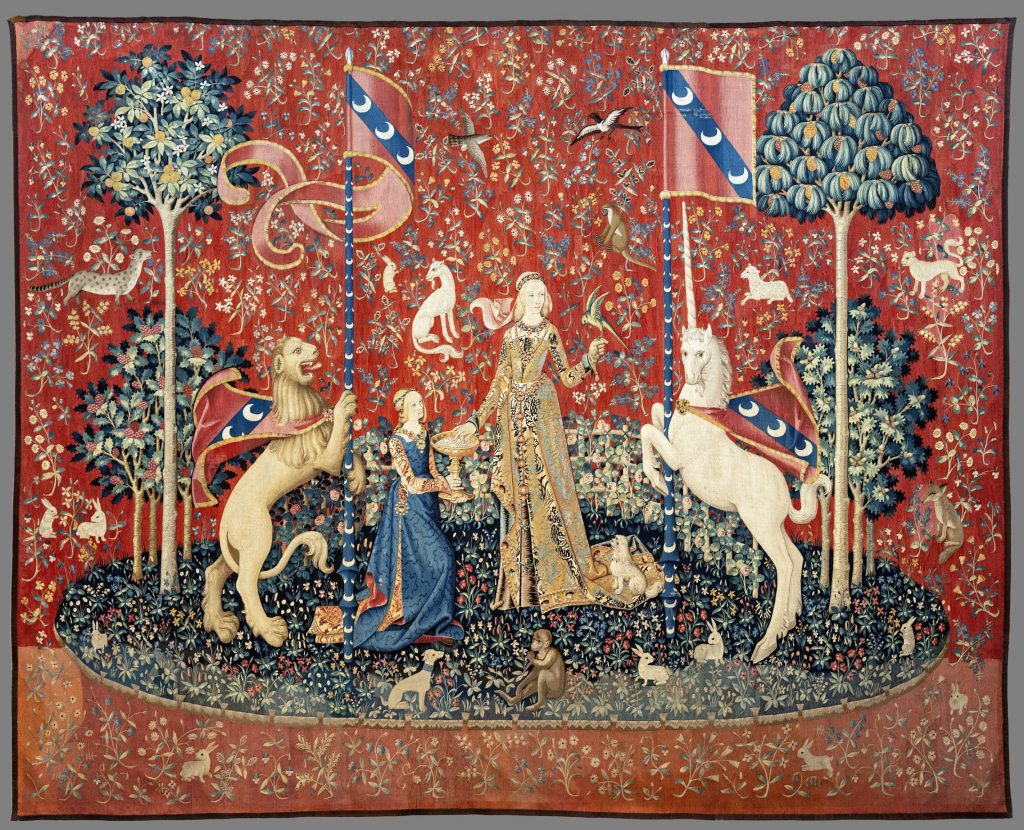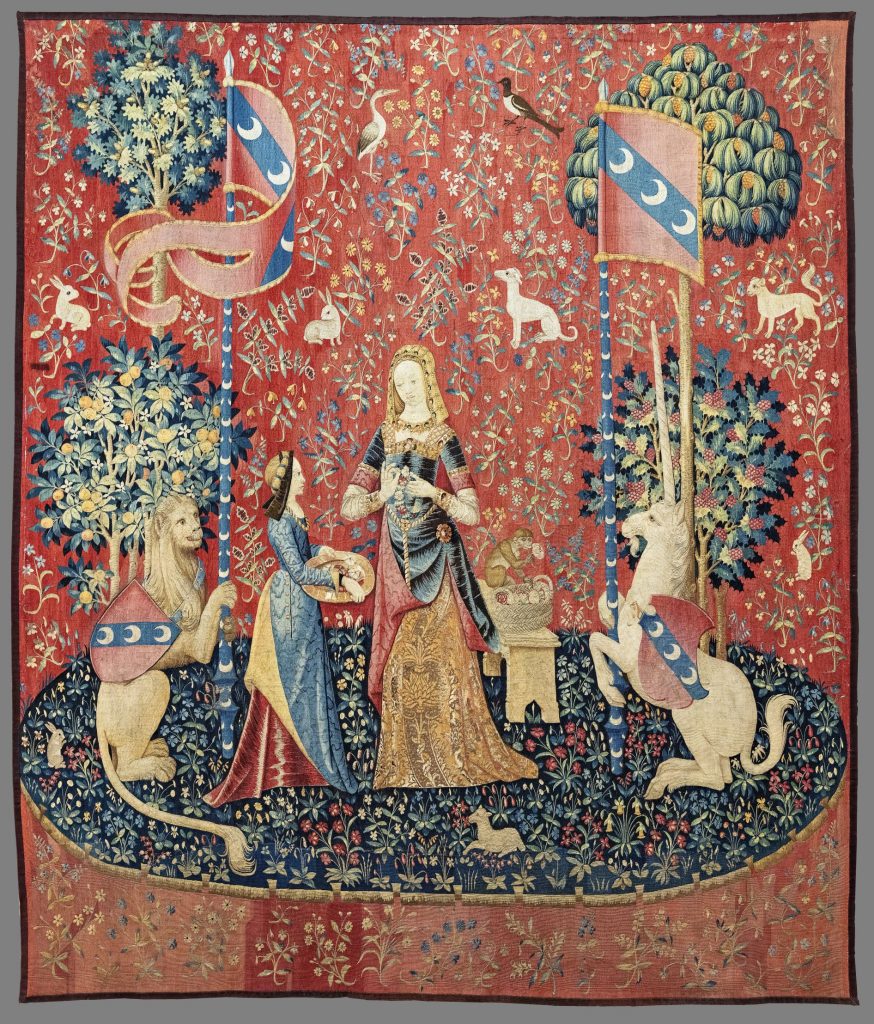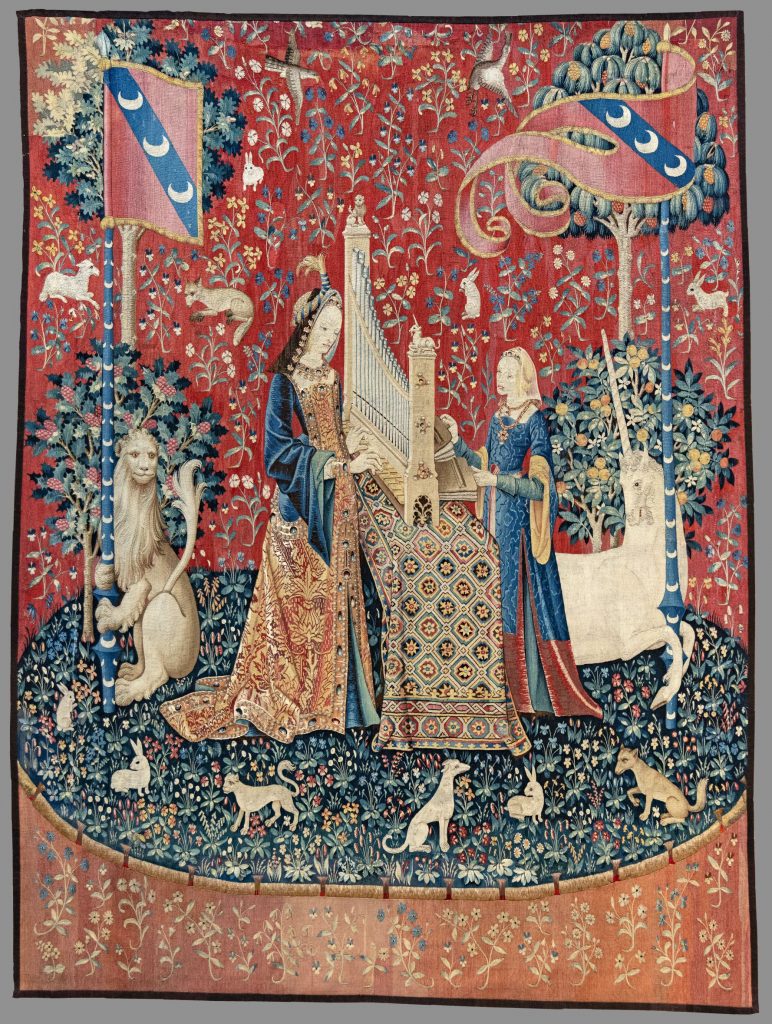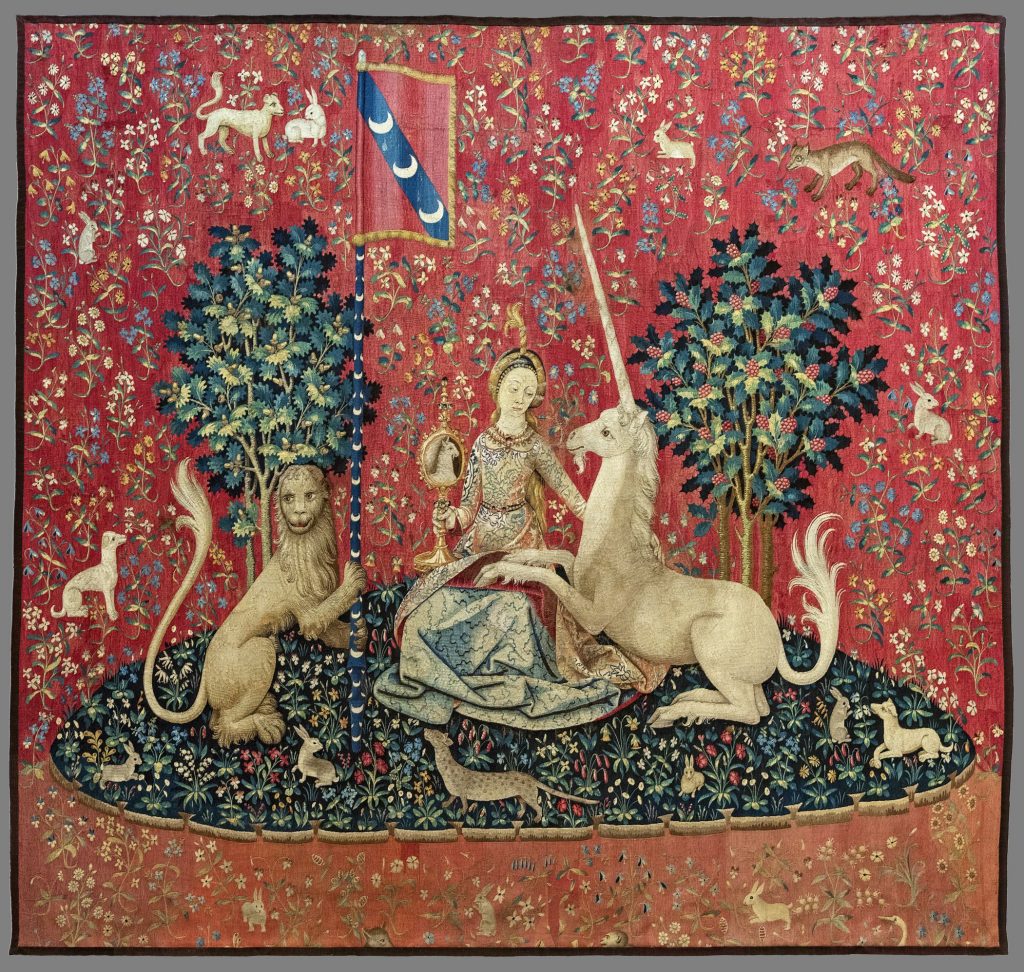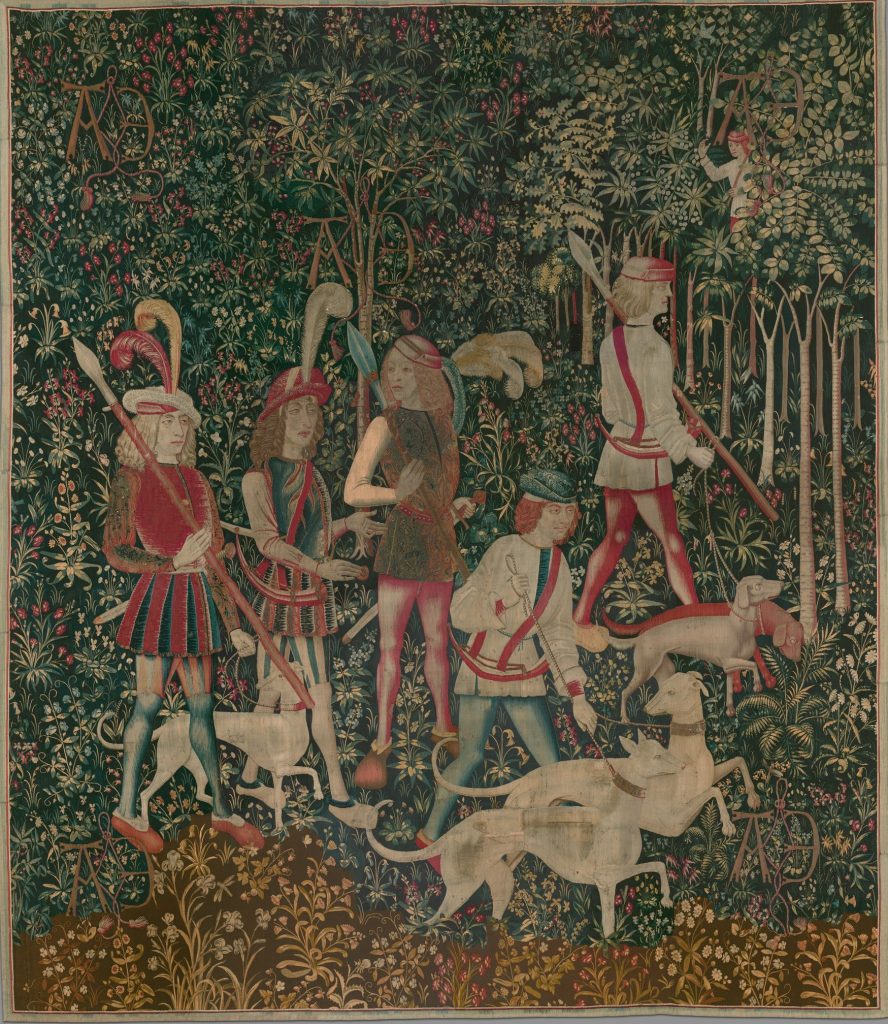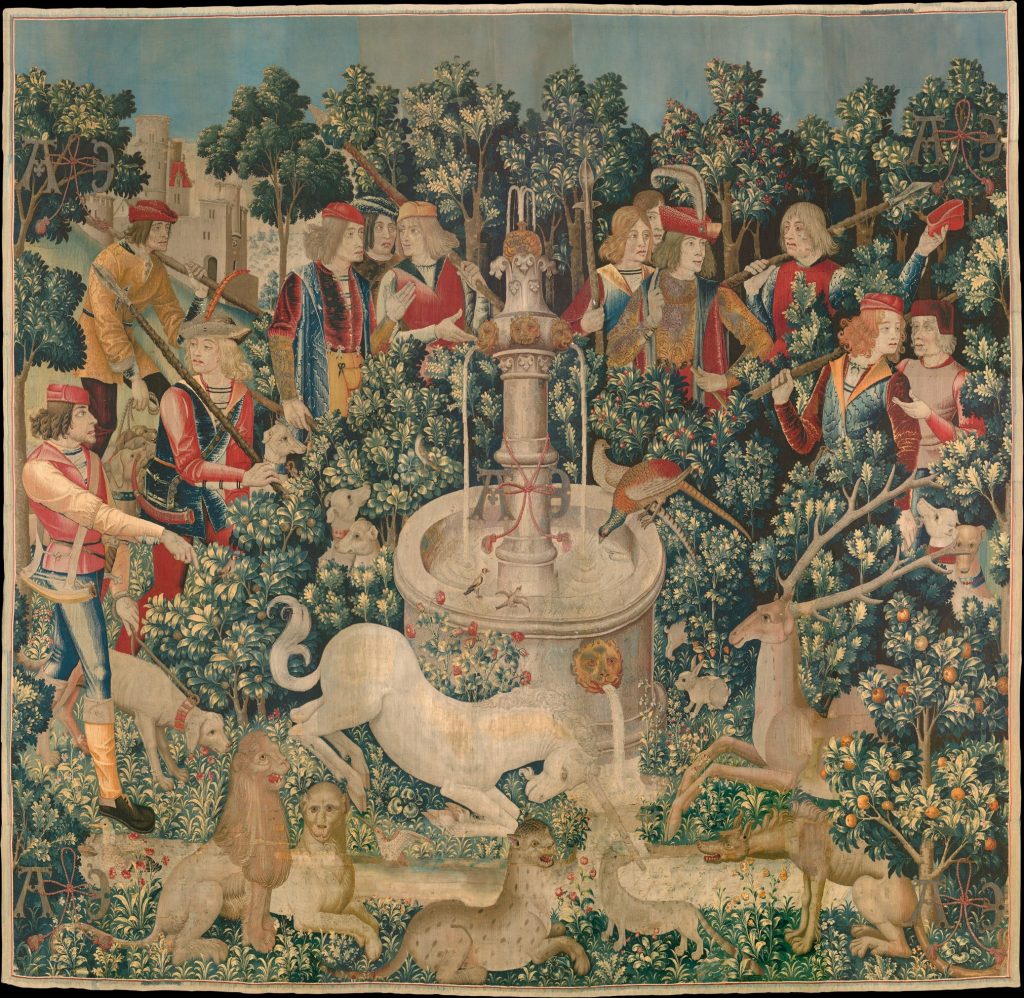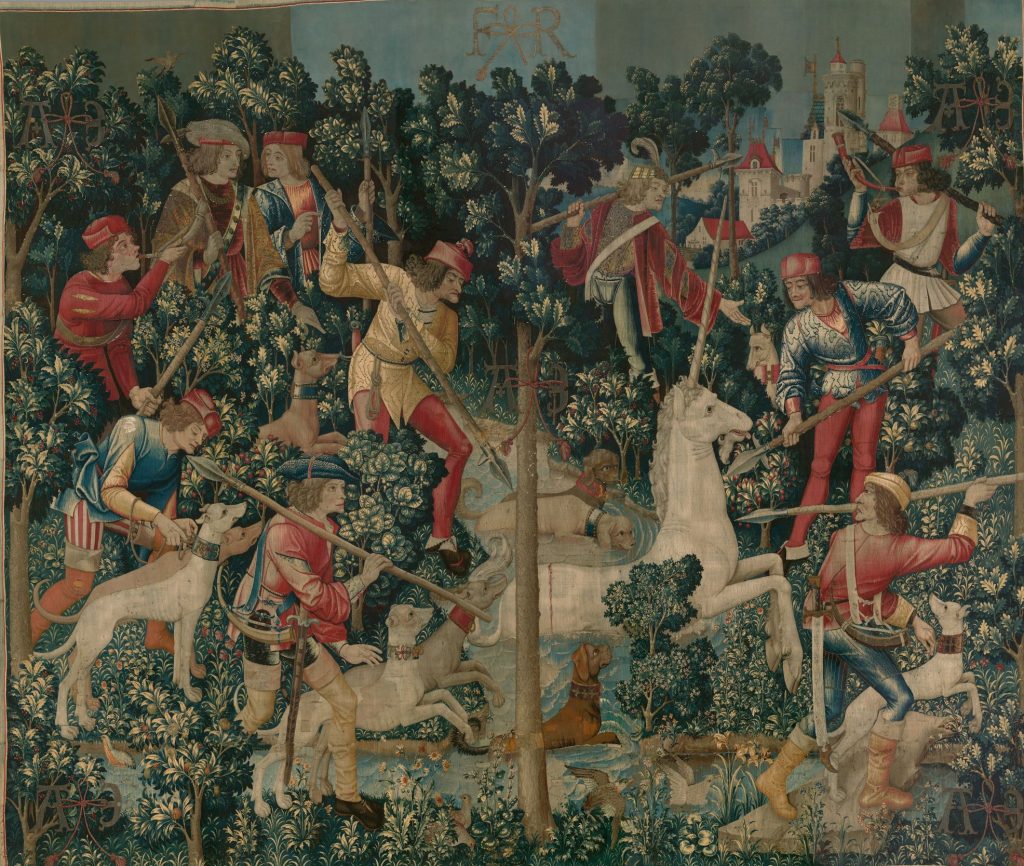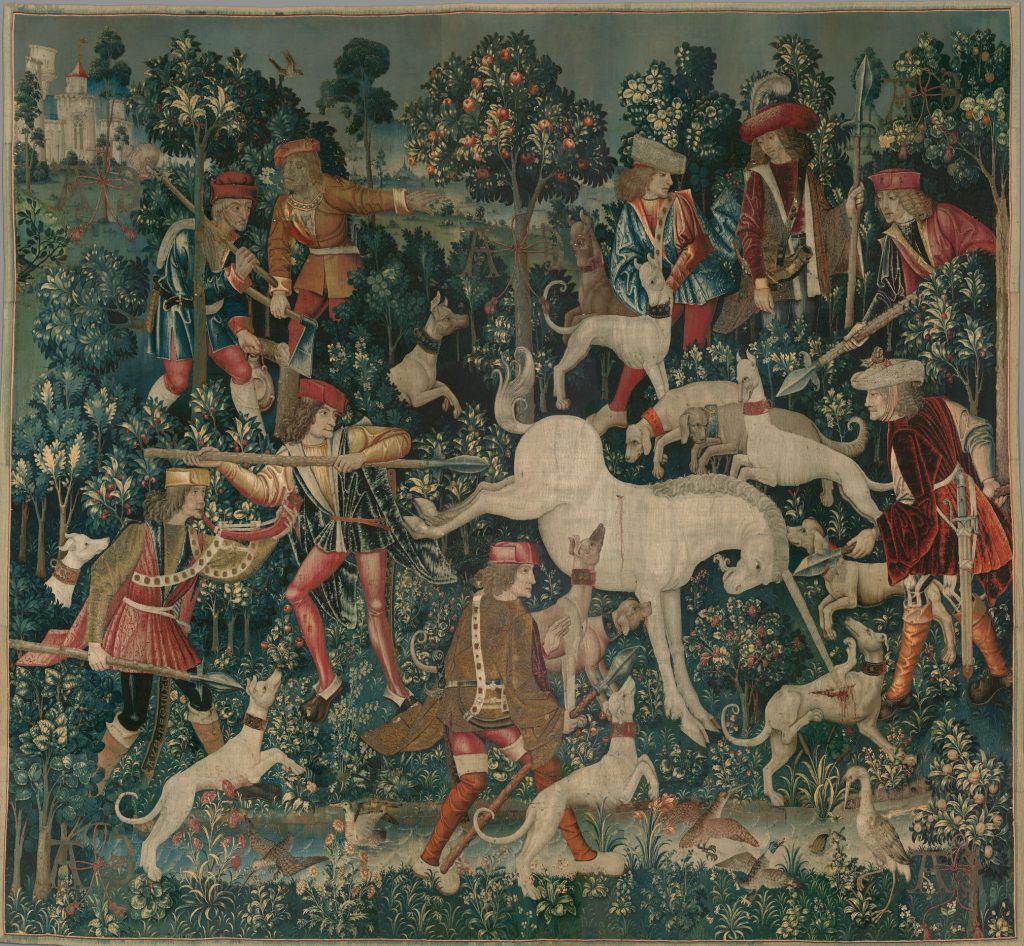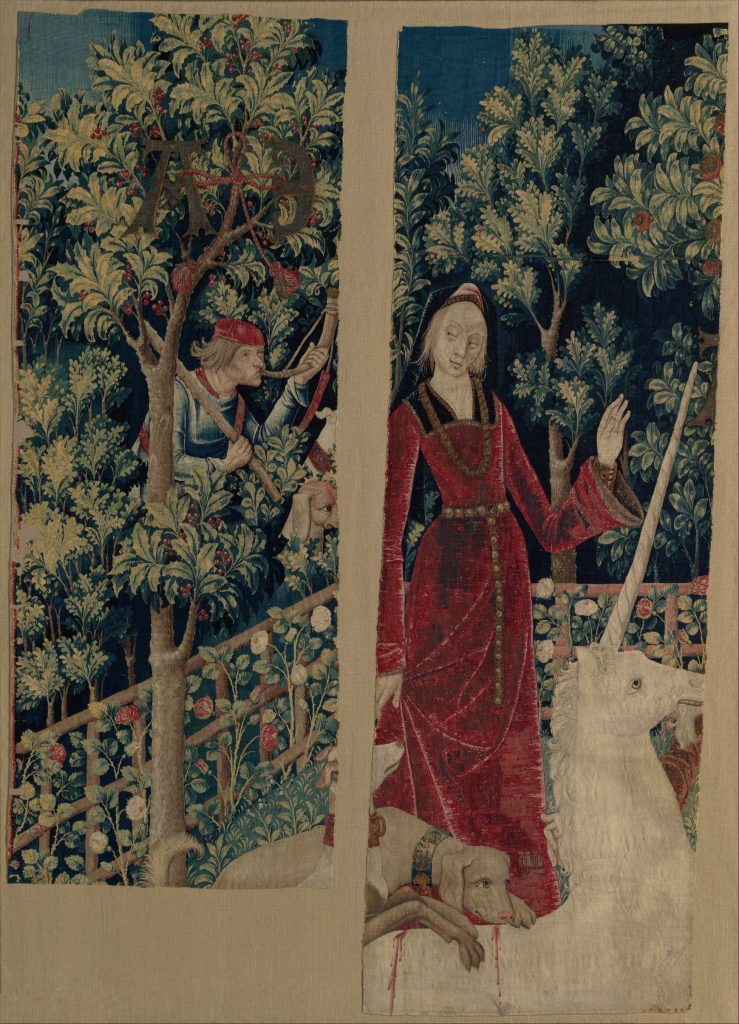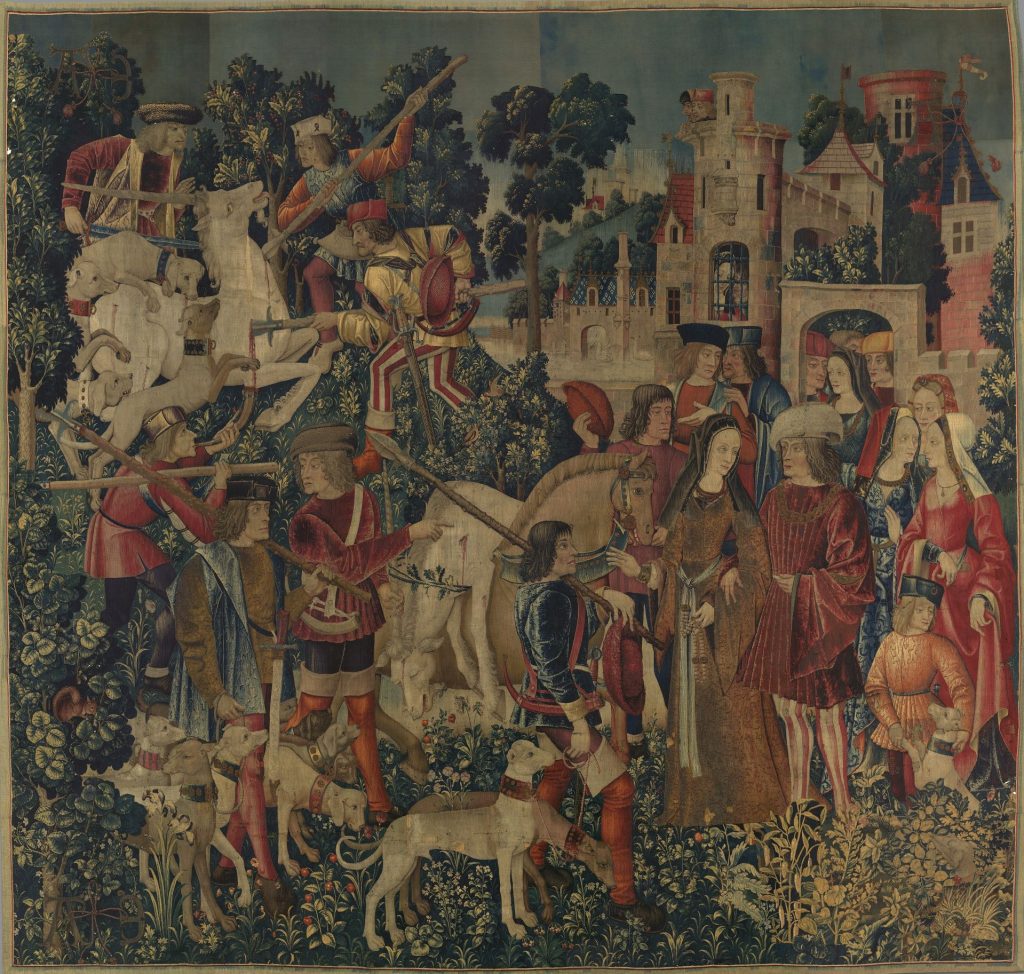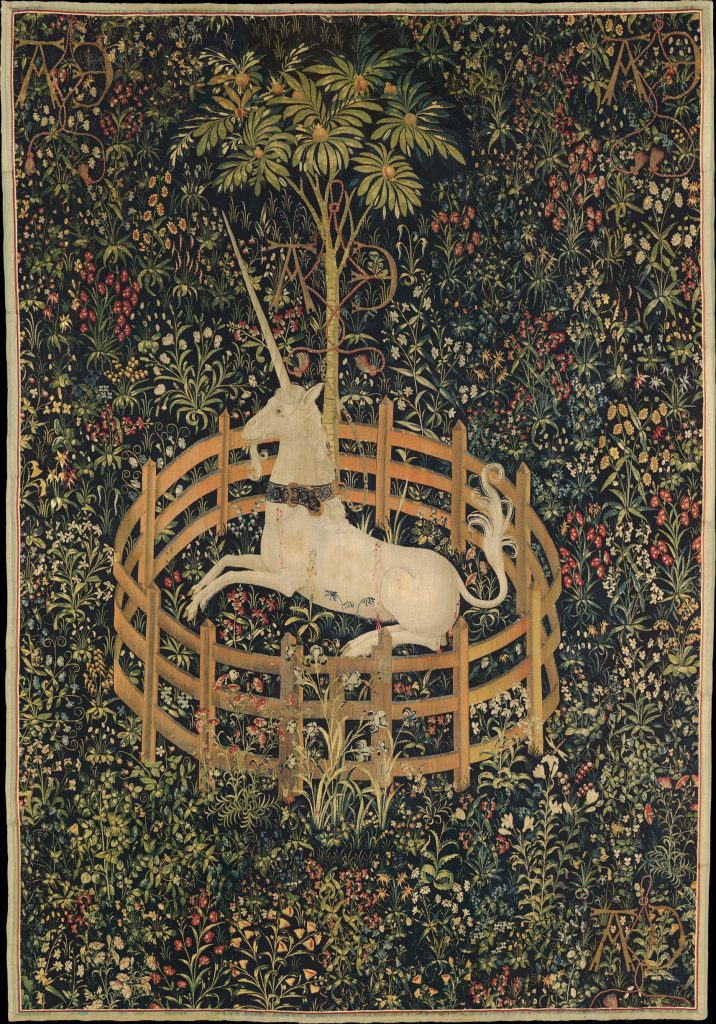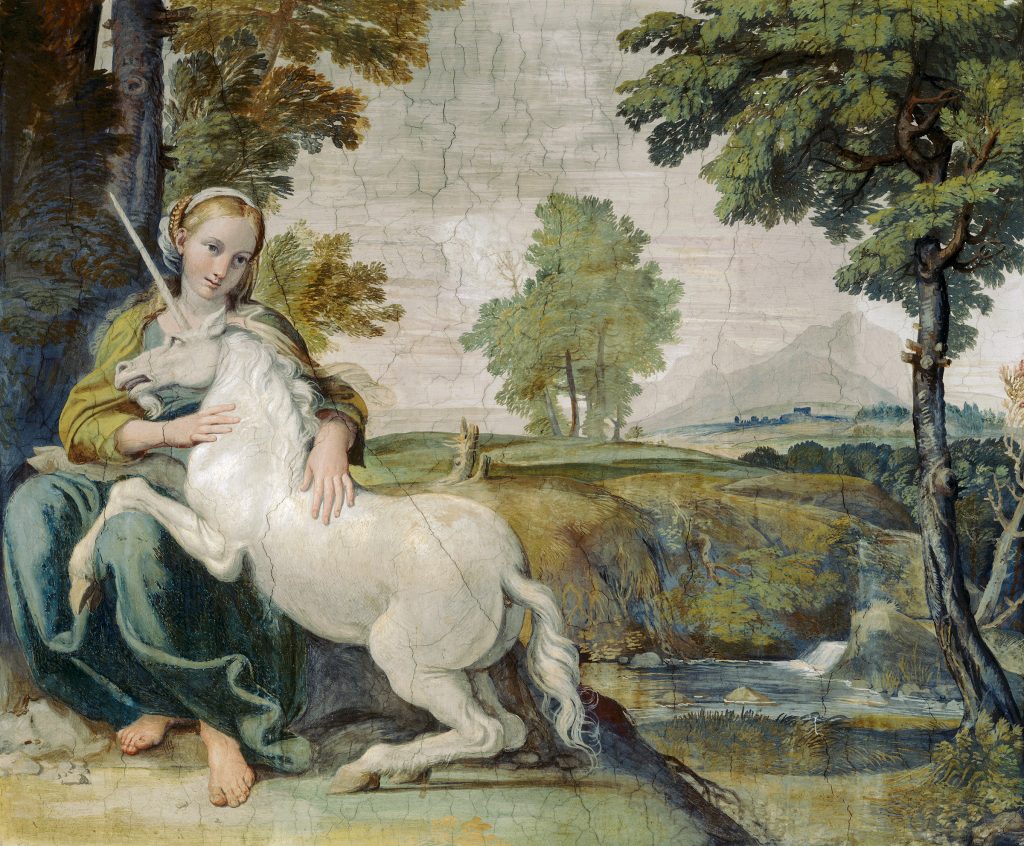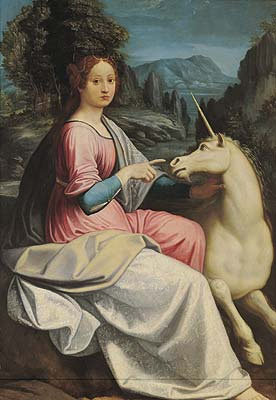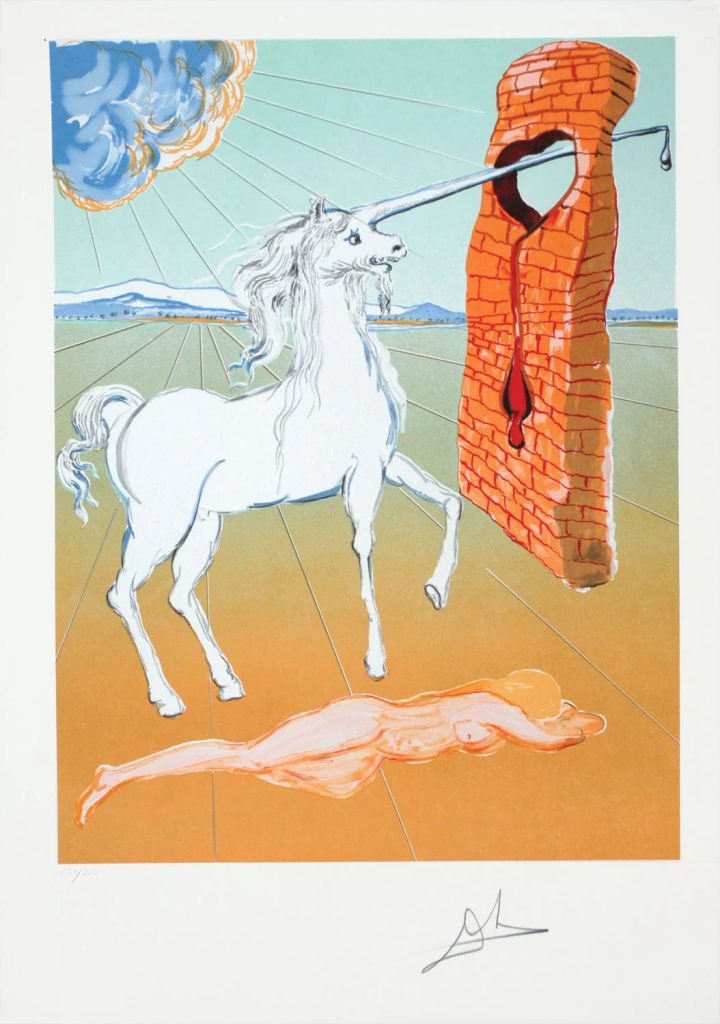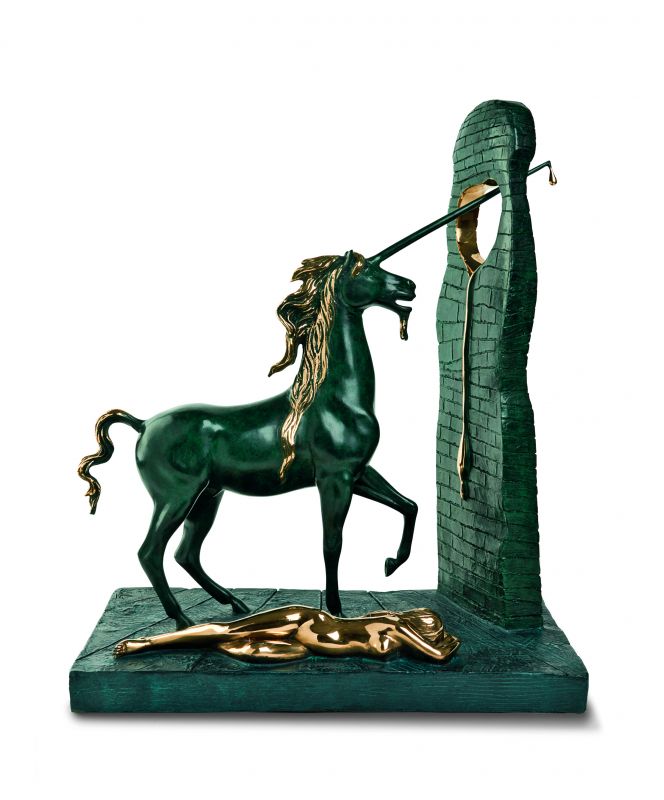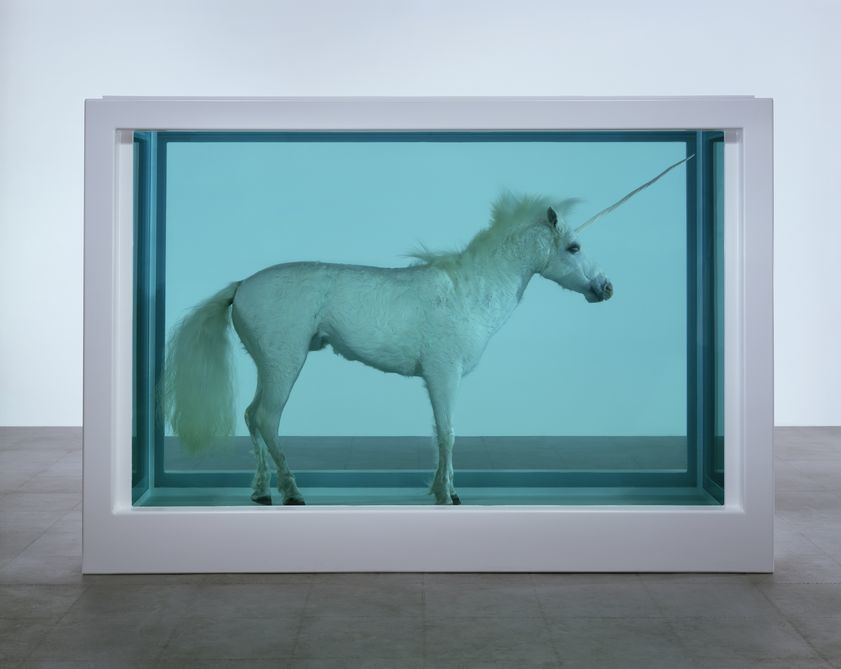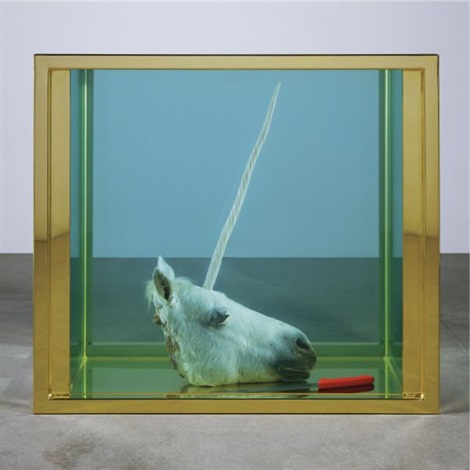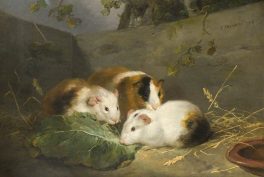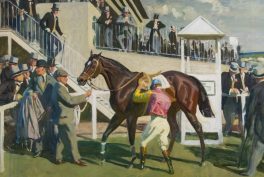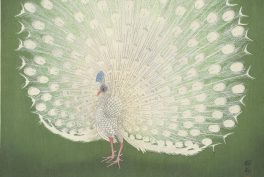Summary
- The Lady and the Unicorn is a set of medieval tapestries which were featured in Harry Potter movies.
- Unicorn Tapestries is another set of medieval tapestries whose symbolism is still debated.
- Raphael created a portrait of a maiden and a unicorn, which looks like a small dog.
- Giulia Farnese, a mistress of Pope Alexander VI, was depicted in several tapestries as the virgin with the unicorn.
- Maerten de Vos created an impressive unicorn painting as a decoration for the Schwerin Palace in Germany.
- In Les Licornes Gustave Moreau created a fantasy isle of women who raise unicorns.
- An unicorn appears in a self-portrait of Surrealist Remedios Varo.
- Unicorns are present in Salvador Dali’s art, even as a bronze sculpture.
- Contemporary artist, Damien Hirst, used unicorns in his series of works depicting animals submerged in formaldehyde.
Unicorn-mania
People have always been fascinated by unicorns. They believed that these rare, single-horned creatures have supernatural powers and that their horn was an antidote to any poison. This has led to great interest in collecting unicorn horns and turning them into fine cups – even Queen Elizabeth I had one. However, besides their alleged utilitarian function, unicorn horns (or rather the narwhal tusks) were a common piece for cabinets of curiosities (Kunstkammer).
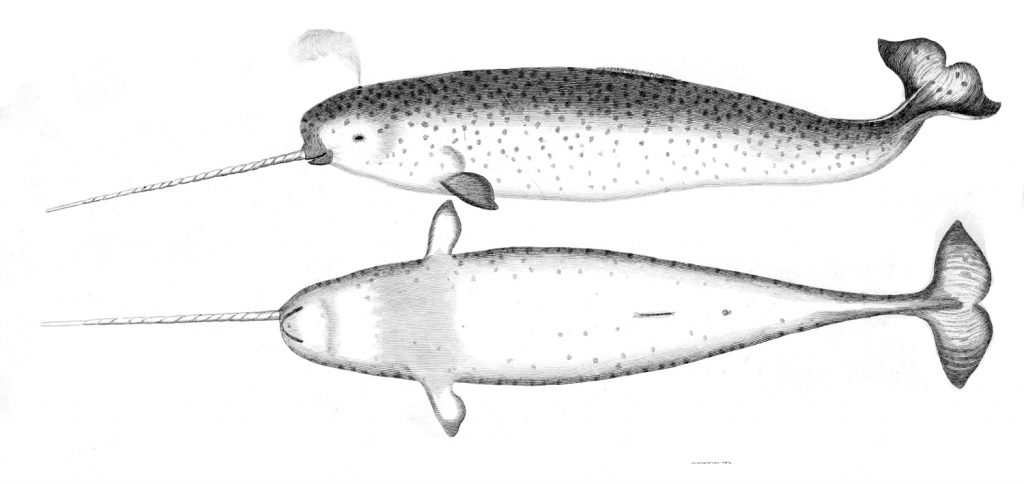
Male Narwhal or Unicorn. Greenland Shark. (Monodon monoceros), illustration from An account of the Arctic Regions with a History and Description of the Northern Whale-Fishery by Scoresby William. Wikimedia Commons (public domain).
This state of knowledge persisted until the 17th-century discovery made by Danish scientist Ole Worm. Worm exposed the truth about narwhals’ tusks being harvested on the shores of Greenland and even he didn’t question the existence of the unicorns! He was just like the ancient scholars who believed in unicorns and were repeating after each other the first description of a unicorn taken from Ctesias’ (ca. 400 BCE) writing.
There are in India certain wild asses which are as large as horses, and larger. Their bodies are white, their heads brown and their eyes dark blue. They have a horn on their forehead which is about a cubit long. (…) The base of this horn, for some two hands breadths above the brow, is pure white; the upper part is sharp and of a vivid crimson; and the remainder, or middle portion, is black.
Indika, ca. 400 BCE.
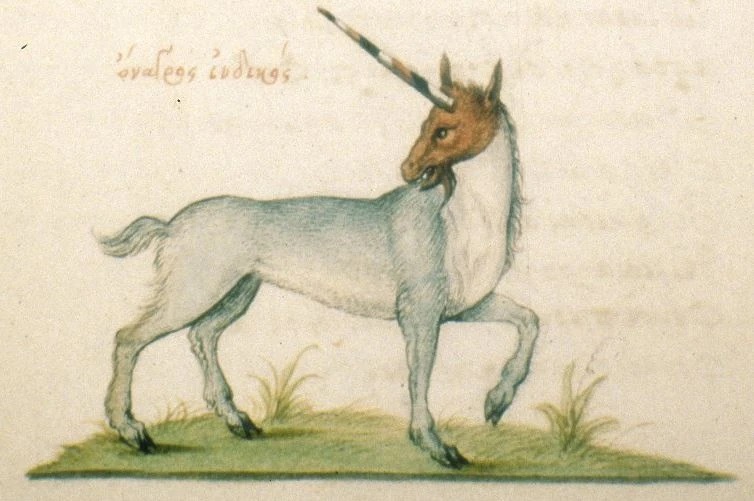
Illustration of the unicorn according to Ctesias. Unicorn Wiki.
Some historians who didn’t find this description very plausible added to the unicorn iconography, claiming that unicorns were small creatures that can be captured only by a virgin. Without further ado, let’s dive into a selection of the best representations of unicorns and see how the artists transformed this description into works of art.
1. French tapestries straight from Hogwarts
Let’s start off with the famous medieval series of tapestries called The Lady and the Unicorn (La Dame à la licorne). This set consists of six woven tapestries designed in France and produced in the Netherlands (now held at the Musée du Cluny, Paris, France). The tapestries were discovered in the 1840s and brought to public notice in the middle of the 19th century thanks to writer Georges Sand. Nowadays they are famous thanks to the Harry Potter movies. Five of them are allegories of the senses but the meaning of the last one is uncertain. The small unicorn who accompanies the lady is a heraldic animal.
2. Mysterious unicorns from the barn to the MET
These unicorn tapestries belong to another medieval set called The Hunt for the Unicorn or Unicorn Tapestries. I won’t be unveiling all of them – let’s leave some a mystery as these unicorns were truly mysterious to scholars for decades! Nowadays researchers do not fully agree on the symbolism of the series. This is because unicorns in the Middle Ages had many associations: they stand for purity, love and seduction, divinity, Christianity, immortality, and much more. At present, The Hunt for the Unicorn is known as one of the most complex pieces of art from the 15th century. However this wasn’t always the case for these precious unicorns. Looted during the French Revolution, they hung in the barn until their rediscovery in 1841 and today they are the pride of the MET Cloisters.
3. Renaissance pet
Leonardo has his famous Lady with an Ermine, Raphael, on the other hand, has a lady with a unicorn! It is a beautiful Renaissance depiction of the legend of the Maiden and the unicorn. When you walk through the Galleria Borghese in Rome, from a distance this small painting looks like a typical depiction of a lady with a small dog or cat as seen in many Renaissance portraits. However, when you get close enough to see more details, a small unicorn is revealed.
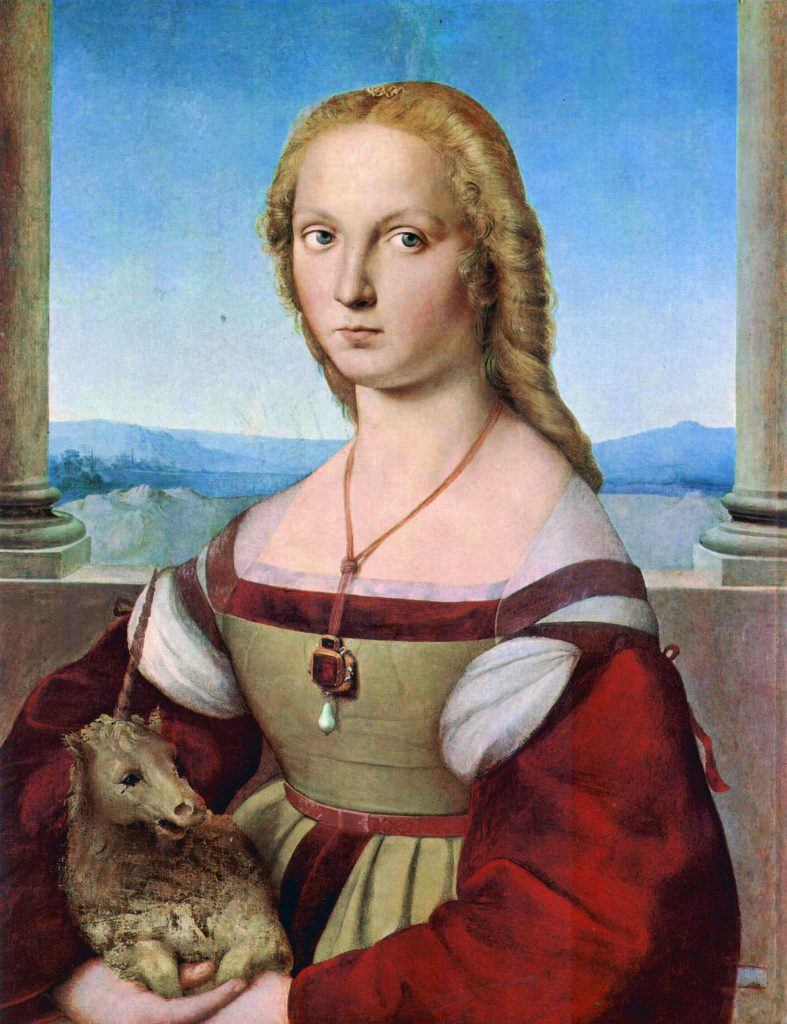
Raphael, Portrait of Young Woman with Unicorn, c. 1505-1506, Galleria Borghese, Rome, Italy.
4. Italian mistress as a maiden with unicorn
Let’s talk about the scandalous beauty of Rome – Giulia la Bella Farnese. Farnese was an influential woman as she was Rodrigo Borgia’s (later Pope Alexander VI) mistress. Her alleged portraits can be found in some religious paintings commissioned by the pope, as well as in secular paintings, where she is depicted as a virgin with a unicorn. Ironic, isn’t it?
Her portrait can be seen in the fresco made by Domenichino (working under the directorship of Annibale Carracci) in Palazzo Farnese as well as in the painting by Luca Longhi. In both depictions, Farnese is presented as a delicate virgin who lures the unicorn to sit in her lap.
5. Unicorn in the ducal menagerie
This painting isn’t full of hidden symbolism. It belongs to the series of ten exotic animal paintings commissioned by Duke John Albert I of Mecklenburg. Originally these paintings were inserted in wooden panels and served as decoration in the Schwerin Palace in Germany. The mythical animal itself is very impressive thanks to its large size. At first sight, the unicorn resembles a usual horse but with a magnificent horn definitely inspired by the popular at that time made from narwhal tusk. However the tail of this unicorn looks nothing like a horse’s tail and its hooves also aren’t normal. The animal is fierce and wild as the ancient sources claimed.
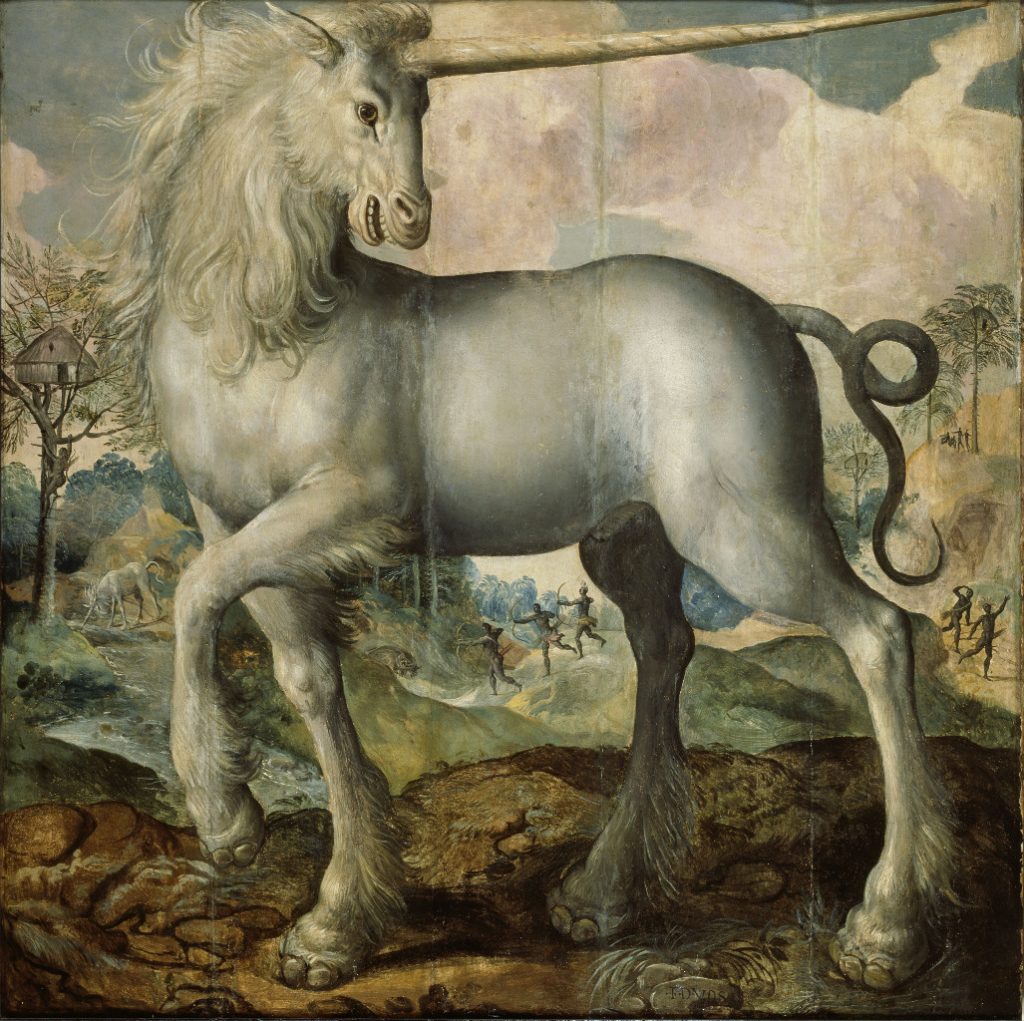
Maerten de Vos, Unicorn, 1572, Staatliches Museum Schwerin, Schwerin, Germany.
6. “An enchanted isle of women raising unicorns”
This is how Gustave Moreau described his painting. Although there are no legends or myths confirming this statement, in his symbolist world virgins are raising unicorns. Moreau’s piece is an oil painting inspired by the aforementioned series of tapestries The Lady and the Unicorn. Les Licornes was a highly praised painting. One collectors said of it “I saw one of the most beautiful things that I have ever seen in my life!” Even Moreau liked it so much that he refused to sell it. Apparently unicorns captivated Moreau so much that this wasn’t the only painting where he depicted them. They are present in many of his drawings, watercolors, and gouache paintings.
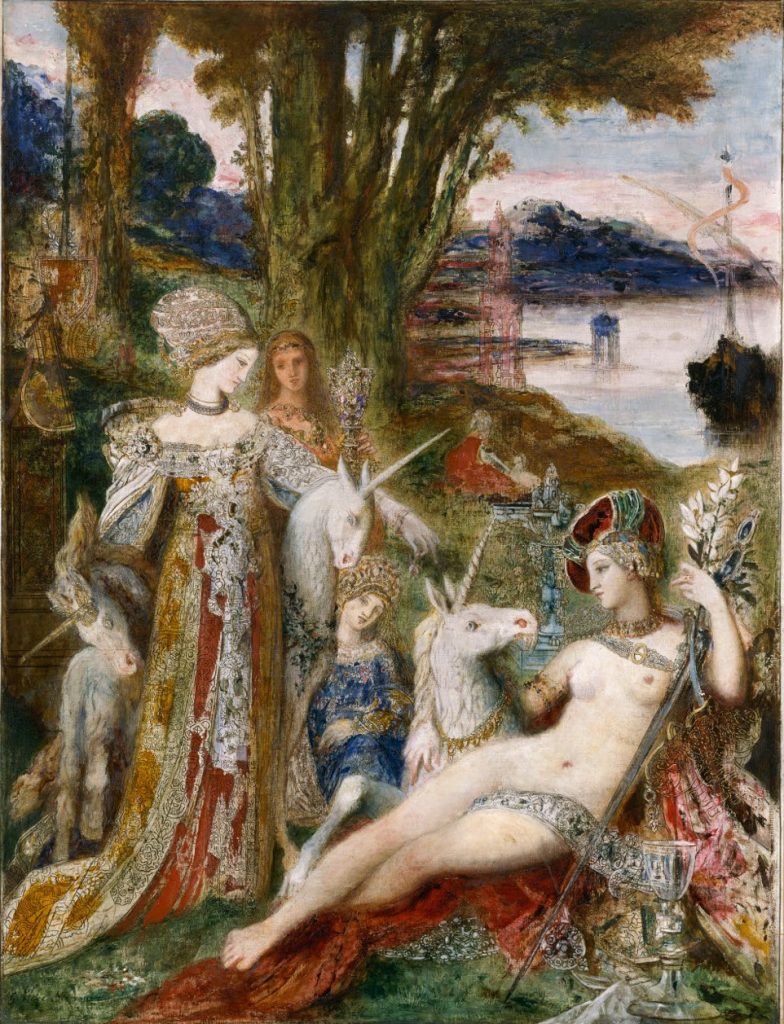
Gustave Moreau, Les Licornes, ca. 1885, Musée national Gustave Moreau, Paris, France.
7. Self-portrait with a unicorn
Spanish painter of the magical world, Remedios Varo, depicted herself with a unicorn in a stylized self-portrait. Varo was exposed to Surrealist art for the first time when she was fifteen and since then she has developed her own style full of magical creatures, unicorns being one of them.
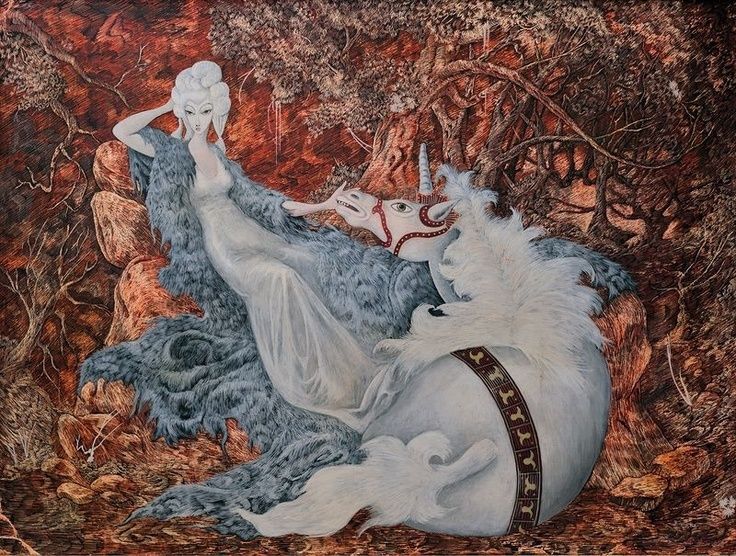
Remedios Varo, Self-portrait with Unicorn, private collection. Pinterest.
8. Unicorns, Surrealists’ beloved subject
The Surrealist world of Salvador Dali wouldn’t be complete without unicorns. Unicorns were a frequent topic in his art. He painted Cheval Allegre and also produced a series of lithographs portraying Lady Godiva riding this magical creature. One of them, Agony of Love (from the series Retrospective), was recreated as a bronze sculpture. This artwork represents his love for his wife Gala (who in his autobiography rides a unicorn), as she was his inspiration for this artwork.
9. The dream
Children’s dreams are more fantastical than adult’s dreams and as the sculptor Constantin Brancusi said, when we are no longer children we are already dead.
Let’s end our listing with a contemporary embodiment of modern cabinets of curiosities – The Dream. The author of this piece, Damien Hirst, is known for his sculptures presenting animals suspended in formaldehyde. Hirst’s artworks often concentrate on the motif of death. So it is this time – another piece representing a unicorn – The Broken Dream, shows us the head of this creature in a tank of formaldehyde.
